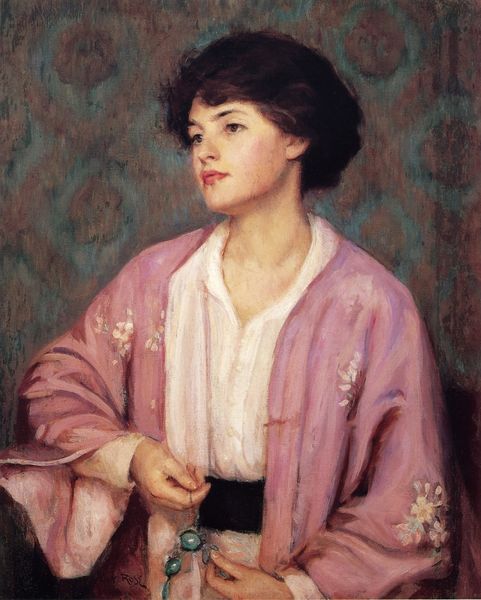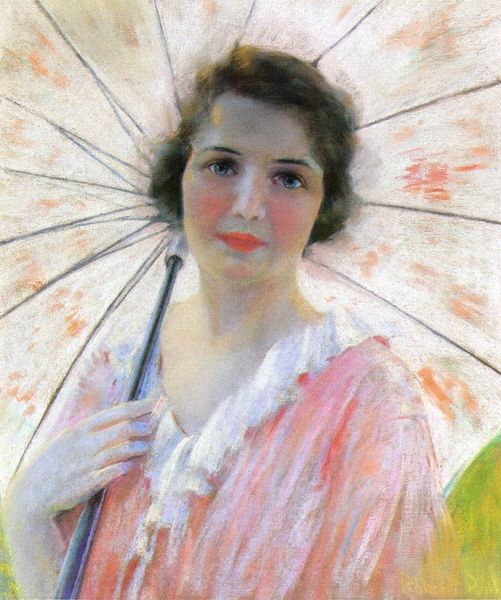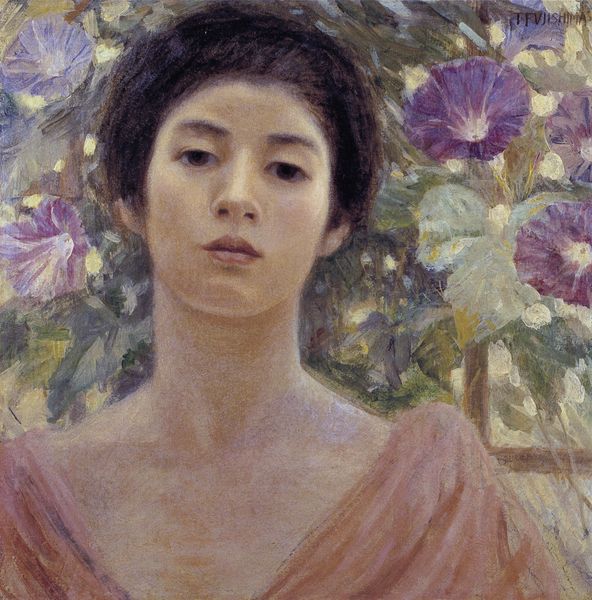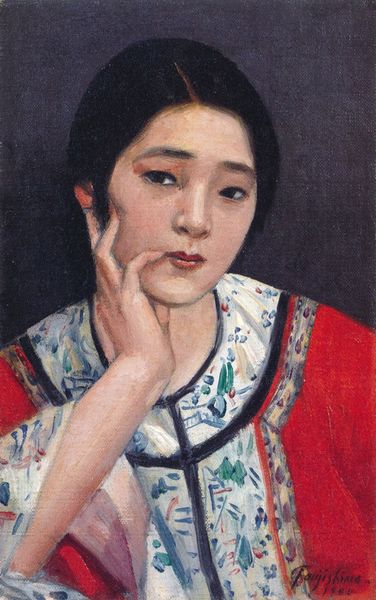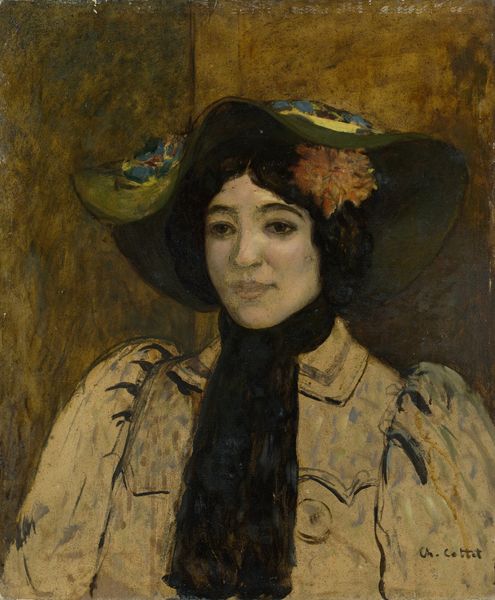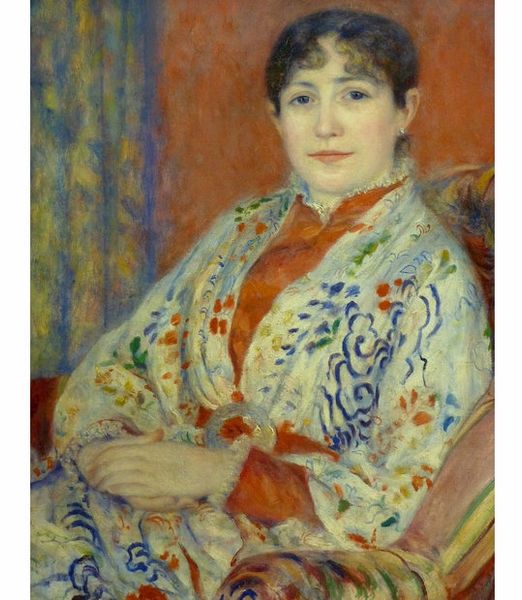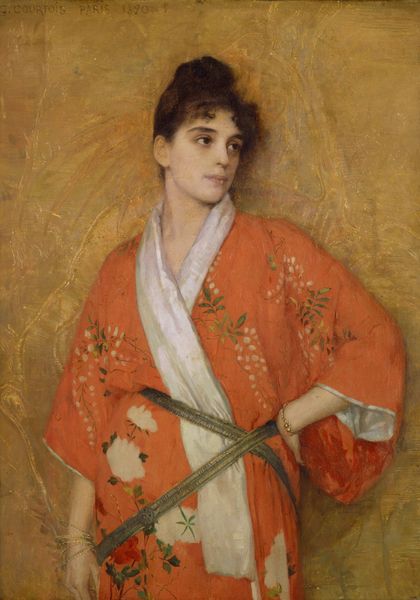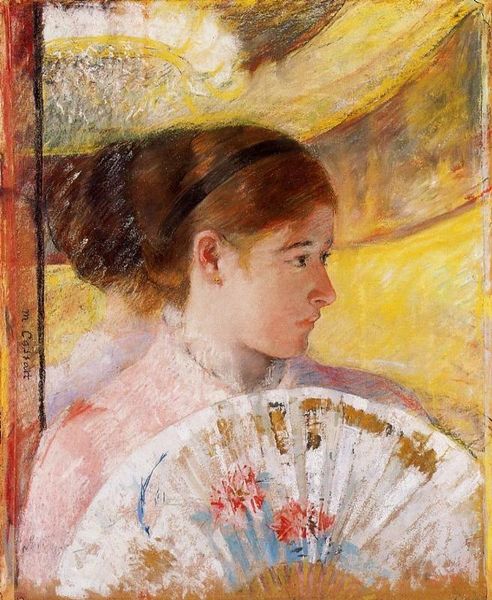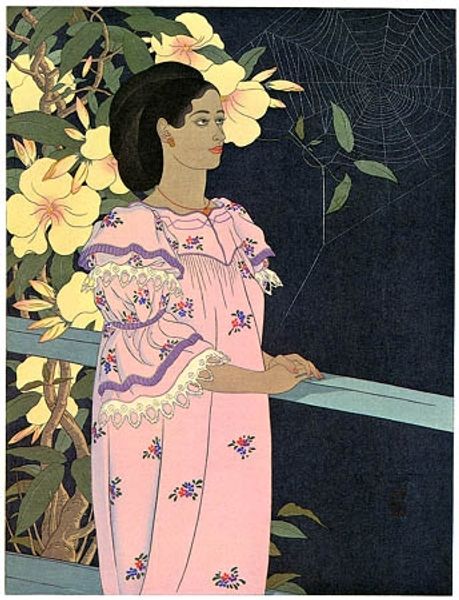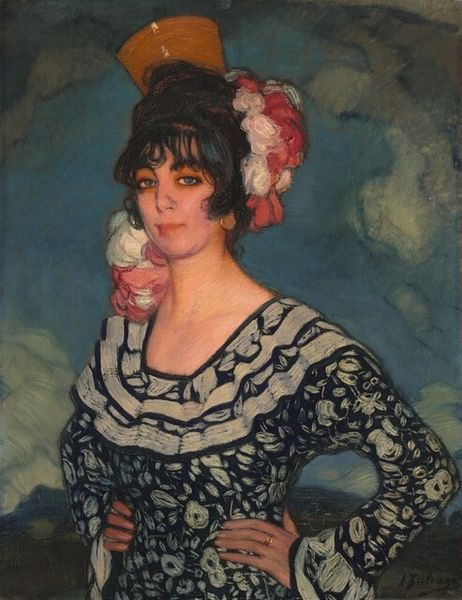
Copyright: Public Domain: Artvee
Curator: This is Frederick Carl Frieseke's "Japanese Parasol," created around 1913, executed in oil paint. The piece is a captivating blend of Impressionism and Japonisme. Editor: It’s beautiful. The hazy light and floral patterns evoke a very serene, yet almost performative atmosphere. The subject seems caught between worlds. Curator: Indeed. Frieseke was an American Impressionist who spent much of his career in Giverny, France, engaging deeply with materiality and labor. Look closely—the visible brushstrokes reveal his process, building layer upon layer to achieve that luminosity. Editor: And consider the title, "Japanese Parasol." The Japonisme movement heavily influenced Western art at this time. But what did it mean to adopt these aesthetics? Was it mere appreciation, or did it play into Orientalist narratives of the exotic and feminine? Curator: Precisely. Japonisme had a huge influence on decorative arts at the time. These imported and often mass-produced objects and motifs became popular status symbols, available for purchase. Editor: That raises questions about class, cultural appropriation, and the market for art. Was this a conscious critique, or simply a reflection of contemporary tastes that potentially obscured the complex realities of the source culture? Also, in terms of production, how did Frieseke's artistic labor compare to the actual craftspeople who made the original parasols and kimonos? Curator: Those are crucial questions! Also, focusing on materiality, you can observe the interplay between the floral kimono, the elaborate parasol, and the almost deliberately casual brushwork. Editor: The woman's gaze is equally interesting. It’s direct, but slightly detached. It's as if she is simultaneously present and observing us, drawing us into that dialogue surrounding identity, performance, and the consumption of culture. I also think about the artist's labor as well. As Frieseke rendered them, they ceased to be ordinary materials and commodities, transforming them into aesthetic signs pregnant with a variety of cultural, sociohistorical references and new meanings. Curator: Examining how it fits into Frieseke’s body of work is important, as his handling of light and texture certainly creates an enchanting surface for reflecting on its complicated relationship with culture, labor, and representation. Editor: It challenges me to reflect on how we continue to engage with global cultural exchanges today. A great way to start a dialogue about those critical issues.
Comments
No comments
Be the first to comment and join the conversation on the ultimate creative platform.
